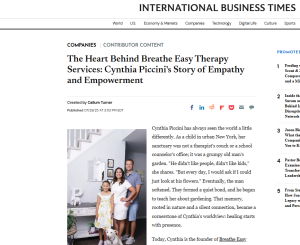Sometimes, focusing on someone else and their needs is more manageable than concentrating on ourselves. Often, we can take on our partner’s issues instead of our own.
We may take this focus to the extreme and to the point where our problems no longer exist.
We may even take it so far that we begin to lose ourselves.
While in small doses, this kind of behavior can seem selfless and self-sacrificing. It may even feel good to help someone else. When this behavior is an ongoing pattern, it can be identified as codependency.
Codependency is “a psychosocial condition manifested through a dysfunctional pattern of relating to others” (Fischer et al., 1991). Those who are defined as codependent exhibit “extreme focus outside of self, lack of open expression of feelings, and attempts to derive a sense of purpose through relationships” (Spann et al., 1990, p. 27, as cited by Happ et al., 2022).
The term codependent was first coined in the 1980s. Its origins come from addiction therapy, specifically the term co-alcoholism, which describes the relationship between alcoholics and their close relationships. Once the chemical component of addiction was introduced into the dependence study, the term co-chemical dependent was coined and later shortened to codependent (Rosenberg, 2013).
According to current research, codependency presents a lack of sense of self, an imbalance that affects emotional, relational, and occupational, and the identification of parental abandonment and control in childhood as responsible for current issues (Bacon et al., 2020).
Surprisingly, codependency does not correlate with supporting a partner, and in intimate relationships, a codependent partner tends to amplify the other person’s problems. Codependency is more prevalent among those with low self-confidence. Indeed, Lindley et al. (1991) found that low self-esteem was the strongest predictor of developing codependency. Dysfunctional families can also breed codependence, mainly when a child’s needs are unmet. When that child grows up, they continue to look for emotionally dysfunctional relationships, often perpetuating the codependency cycle (Lindley et al., 1991)
Codependency can be present in all types of relationships. Friends, parents and children, and coworkers may be codependent. Overprotective parents may foster codependency with children, a friend may be overly jealous, or a coworker could be controlling, for example (Huntington, 2023). The relationships can, over time, result in burnout, guilt, anxiety and depression, and a loss of sense of self (Bacon et al., 2020). Individuals who experience one-sided codependent relationships exhibit signs of burnout and even hopelessness.
Signs of Codependency
- Your mood depends on another person’s– You’re “walking on eggshells.”
- Fear of Offense: Holding back on expressing emotions for fear of the effects.
- External Validation: Your opinion of yourself is based on feedback from others.
- Experiencing Abandonment: You didn’t have attachment needs met as a child.*
*Information courtesy berkleywellbeing.com
Creating boundaries is central to rebuilding codependent relationships. Those in treatment learn to communicate better and relearn how to be part of a healthy, supportive relationship. Treatment can also include rediscovering yourself and your likes and needs. Therapy can be an opportunity to regain balance by obtaining an unbiased and trained perspective, whether you choose individual or couples therapy.
For more information on how Breathe Easy Therapy Services can help, contact us here.
References
Bacon, I., McKay, E., Reynolds, F., et al. (2020) The Lived Experience of Codependency: an Interpretative Phenomenological Analysis. Int J Ment Health Addiction 18, 754–771. https://doi.org/10.1007/s11469-018-9983-8
Fischer, J. L., & Spann, L. (1991). Measuring codependency. Alcoholism Treatment Quarterly, 8(1), 87-100.
Happ, Z., Bodó-Varga, Z., Bandi, S.A. et al. How codependency affects dyadic coping, relationship perception, and life satisfaction. Curr Psychol (2022). https://doi.org/10.1007/s12144-022-02875-9
Huntington, C. (2023) Codependency: Definition, Examples, Symptoms, & Recovery. https://www.berkeleywellbeing.com/codependency.html
Lindley, Natasha R., Giordano, Peter J., and Hammer, Elliott D. (1999) Codependency: Predictors and psychometric issues. Journal of Clinical Psychology, 55 (1) 59-64. https://doi.org/10.1002/(SICI)1097-4679(199901)55:1<59::AID-JCLP5>3.0.CO;2-M
Rosenberg, Ross (2013) The History of the Term, Codependency. https://psychcentral.com/blog/human-magnets/2013/11/the-history-of-the-term-codependency#1





